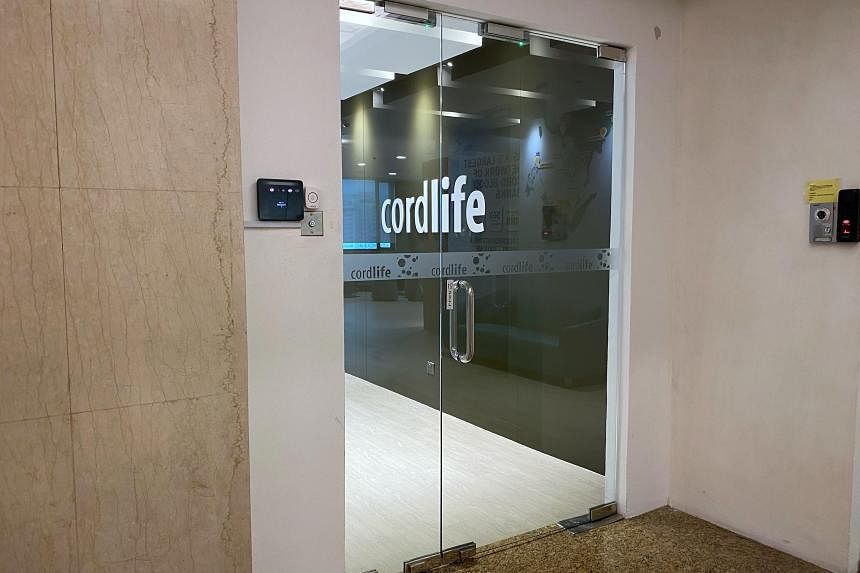SINGAPORE – Cordlife’s claim that viability and potency tests for over 200 cord blood samples requires a year is being contested by international experts, who say these tests can be completed in six to 10 weeks.
Thirty samples from five cryogenic tanks at the private cord blood bank have passed viability and potency tests by an independent third-party lab, indicating that nearly 14,000 units in the tanks are at low risk of being affected by temperature warming events.
But for the results to be statistically significant, over 200 more samples will need to be tested by a third-party lab, which Cordlife said will take a year to complete.
This ostensibly adds to the parents’ anxiety. They have already been kept in limbo for months since it came to light in November 2023 that cord blood units in seven of Cordlife’s 22 storage tanks were exposed to suboptimal storage temperatures. Damage to 7,500 cord blood units from two tanks and a dry shipper has been confirmed.
Three experts that The Straits Times spoke to said that there are standard tests for cell viability and potency, and it should not take a year for a regular lab to process and get the results for 200 samples.
Dr Roger Mrowiec, clinical laboratory director of Vitalant Cord Blood Program in New Jersey in the US, said: “(The one-year timeline) is definitely totally unjustified. If I were in that situation, I would want to resolve this as quickly as possible.”
In response to queries from ST, a Cordlife spokesman said that the one-year timeline is based on the current testing capacity for qualified labs here that have the expertise for this type of testing.
“However, we are actively having conversations with additional laboratories to explore more options. We will continue to do everything we can to speed up the testing process while making sure that the test results are thorough and reliable for our clients,” said the spokesman, who added that it cost $425 to test each sample.
Cordlife is looking to overseas labs to aid in the testing, and to safeguard the integrity of the samples during international transportation. Cordlife will also work with experienced medical couriers adept in cold-chain logistics, the spokesman added.
A Ministry of Health spokesman said the one-year estimation also takes into account the complex processes of transporting the cord blood units for testing.
What type of tests are done
Cord blood, collected from the umbilical cord after childbirth, is banked for its valuable stem cells, which can be used in medical treatments for various diseases.
It is stored in cryogenic bags that typically have small segments, which can be separated and thawed for testing purposes.
A laboratory would test for the potency and viability of cord blood units based on a few parameters.
One of them is the total nucleated cell (TNC) count, which measures the total number of white blood cells within a cord blood sample. This is an important gauge to determine if a cord blood unit can be used for stem cell transplants.
Another important parameter is the number of cells with a protein called CD34+.
This protein is primarily found on the surface of hematopoietic stem cells, which are arguably the key component in a cord blood unit, as these cells have the ability to help with the treatment of diseases due to their regenerative properties.
To test for cell viability, a dye like 7-amino-actinomycin D is added to the cord blood sample, which turns dead cells fluorescent as their cell membranes generally become permeable.
Dr Mrowiec said readings for the cell counts and viability of TNC and CD34+ can be done in one to two hours using a common laboratory equipment called a flow cytometer. He is also an assessor who ensures that facilities comply with standards set by global body the Association for the Advancement of Blood & Biotherapies.
The most time-consuming test, called the colony-forming unit (CFU) assay, which tests the ability of the cells to multiply and form colonies in a cell culture, takes two weeks.
“The preparation for the CFU assay takes 30 minutes and then it sits in an incubator for 14 days. After that, the results are read for 10 to 15 minutes,” said Dr Mrowiec.
Cells of a viable cord blood sample would have proliferated and developed into different or more mature cell types.
He stressed: “There are no other parameters you would use to qualify viability and potency for cord blood units.”
Testing five to 10 samples a day ‘not unusual’
Professor Gesine Koegler, a researcher at University Hospital of Dusseldorf’s Institute for Transplantation Diagnostics and Cell Therapeutics, said that tests can be done simultaneously and are routine for a standard lab.
“One technician can easily do 10 samples a day. If you’re a small lab, with 10 samples a day, you can finish the bulk of the tests in 20 working days, which is about a month. With another two weeks for the results of the CFU assay and interpreting the results, it should be completed within six to eight weeks,” said Prof Koegler.
Even if the lab can only do a “low number” of five samples a day, it should take about eight to 10 weeks, said Prof Koegler, who is also the director of the Jose Carreras Cord Blood Bank, a public cord blood bank in Dusseldorf, Germany.
Referring to Cordlife’s stated timeline, she added: “It just doesn’t make sense, unless they have very inexperienced people. Ten samples a day is not unusual.”
Cordlife acknowledged that viability testing is relatively straightforward compared to potency testing, which tests cell proliferation and differentiation potential. But its spokesman added: “(Potency testing) is a time-consuming process that requires meticulous handling and monitoring at every step to ensure accuracy.”
MOH said that it will continue to closely supervise Cordlife’s rectifications and review the results of the testing when it receives them.
The ministry has also commenced formal investigations against Cordlife and its personnel for potential offences under the Healthcare Services Act and its regulations.
In the meantime, one expert, Dr Jason Acker, has offered worried parents a ray of hope – that, based on information released by MOH and Cordlife, the cord blood units in the five tanks could be unaffected.
Dr Acker, a professor in the department of laboratory medicine and pathology at the University of Alberta, Canada, has studied the impact of transient warming on cord blood units. This is where a frozen sample experiences a sudden, short-term increase in temperature.
Four of five tanks had temperature lapses due to misplaced or incorrect mapping of temperature probes, while one tank was exposed to temperatures of minus 144.7 deg C for five hours. International standards state that cord blood units should be kept at minus 150 deg C.
“Warming up to minus 144 deg C would have almost no detectable effect on the product, it is an almost insignificant transient warming,” said Dr Acker.
“But the impact also depends on what cryoprotectant strategies were used to preserve the samples in the first place.”


